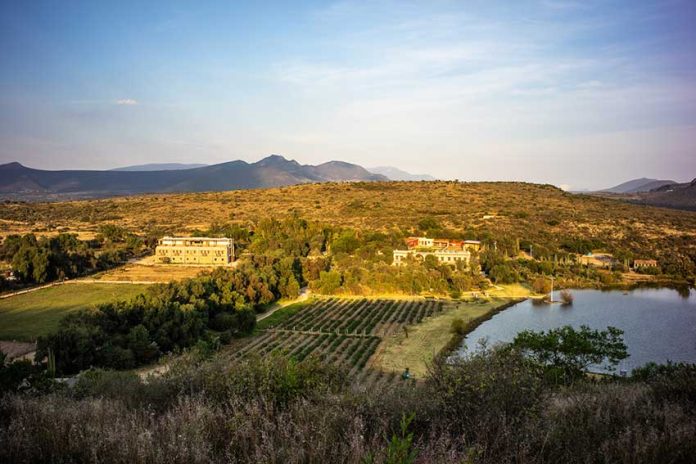From sipping wine in lush green vineyards to sampling some of the many fine Mexican cheeses, the “Ruta de Queso y Vino” (Wine and Cheese Route) in Querétaro has it all.
The semi-arid desert and high altitude of the region provides the perfect climate for vineyards to thrive, and the area has become one of the most important gastronomic destinations in Mexico.
However, as the market for organic foods and wines increases around the world, much of Mexico’s organic food finds its way to foreign countries, with just 2 percent of production staying within Mexico. As part of my visit to Querétaro, I wanted to find out more about the organic farms and vineyards that are providing tasty and healthy alternatives for the Mexican market, both local and national.
We based ourselves in the pueblo mágico (magical town) of Tequisquiapan, a colonial town which serves as the traditional starting point for the Ruta de Queso y Vino. From Tequisquiapan, numerous tour providers take visitors to many popular vineyards and cheesemakers, including Freixenet, La Redonda and Cava de Quesos Bocanegra. However, as we had a specific agenda in mind, we chose to arrange our own tours.
Our first stop was Viñedos Los Rosales, a 10-minute drive from Tequisquiapan. Founded in the early 1970s, the winery started with seven hectares of Salvador grapes imported from Argentina and Chile, which they sold to other wineries.
In 2011 when the property was purchased by the current owners, they began making their own organic, artisanal wines in house. Today, the vineyard includes well-organized rows of cabernet sauvignon, malbec, merlot, chardonnay and muscat on their 12 hectares of land.
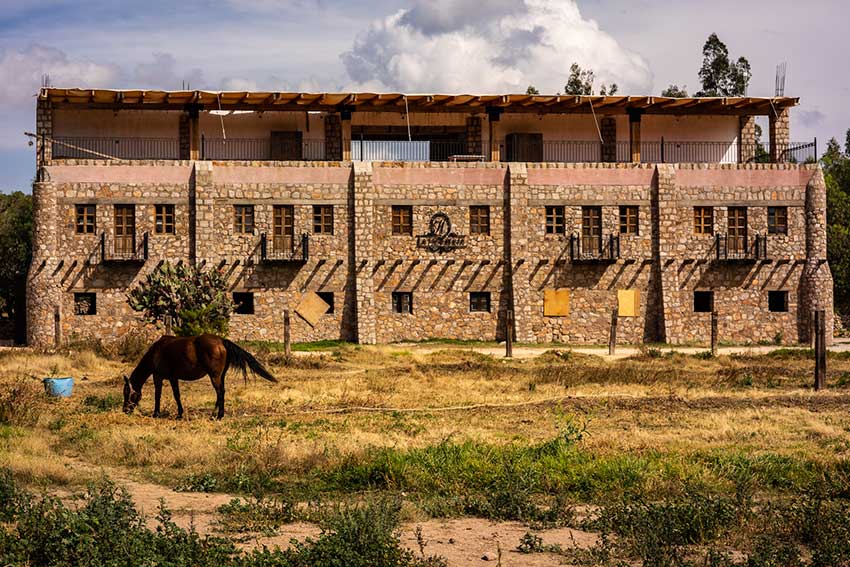
Switching to organic growing came with a new set of challenges, primary among them how to manage the chicatanas, or leafcutting ants. The giant brown ants arrive with the rains at the beginning of July and proceed to eat the leaves and fruit on the vines.
To combat this plague, the workers use a natural insecticide made of fermented orange peels and spray down each plant by hand.
Managing the pests is not the only task that’s done manually. In fact, almost every stage of production involves manual labor, from picking the grapes off the vine down to labelling the bottles. We watched as three employees sat in a small bright room inside the winery’s main building and placed the eye-catching labels precisely onto the full bottles of wine.
As I worried they might enlist my help, I promptly ensured that I lacked the coordination required by heading off to sample some of their wines.
First up were the dry and semi-dry wines from the Misiones Chapelet line. I found them both sweet, earthy and fruity, and unlike any other wine I’ve tried. As a dessert wine, both are excellent. Next, I tried their Puerta de Cielo line, a blend of malbec, cabernet sauvignon and merlot. Between the semi-dry and regular varieties, I preferred the regular, which was full-bodied and earthy. It would pair well with a hearty meal and red meat.
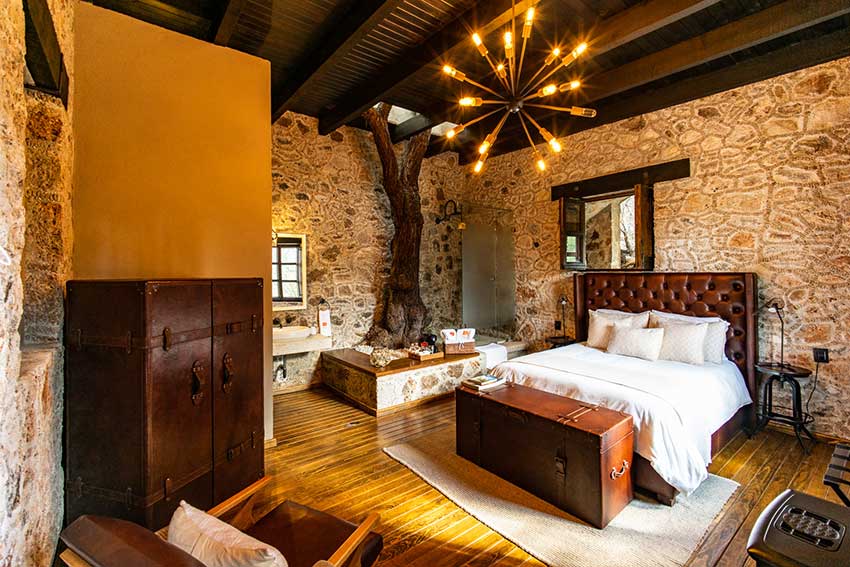
As tempting as it was to stay and sample more of the wines, we had to move on to our next destination. We travelled north along Highway 120 past Cadereyta de Montes to the front gates of Hacienda Tovares.
As we continued down the narrow gravel road to the entrance of the 17th-century building, I could tell from the vast expanse of desert and rolling hills encompassing the hacienda that it offered far more than just an organic farm. And I certainly wasn’t disappointed.
Guests can participate in many activities at the hacienda, including kayaking, cycling and yoga. Perhaps most interestingly there are 36 horses that are used for carriage rides, horseback riding and equine therapy. Above the horse stables is an event space and 64-bed hostel-style accommodation. If shared rooms aren’t your style, they also offer an eight-room boutique hotel.
The most unique suite is the Pirul, which has a sizable tree reaching up through the ceiling into the second story. Next to the hotel sits the main building, dating from the mid-1600s and renovated in 2013. The building hosts a small altar, the administration offices and, in the central courtyard, an open-air restaurant, mostly supplied by the in-house farm, which is what we came to explore.
Our guide Magdelina and cook Gustavo led us through the organic farm, where they grow everything from pomegranates and pears to chiles and avocados. The 28 gardens are spread around the grounds, and tidy pathways allow visitors to walk through the vibrant green fields.
Next to a small lake is a new vineyard, and they hope to make their own wine soon.
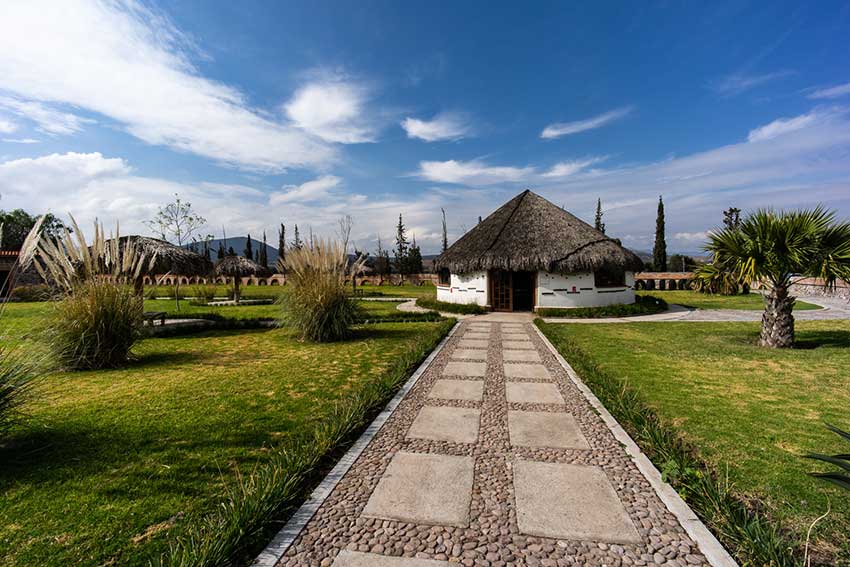
On the hill at the back of the property they’ve set up a beekeeping area to harvest honey, and the grounds also offer room for various farm animals including chickens and sheep. The majority of the produce is destined for their farm-to-table restaurant, which we visited next.
For starters, we tried crema de camote, a vibrant yellow yam soup that was creamy and sweet. For my entree I had the pechuga de pollo con mole xoconostle, a sliced chicken breast served with yellow rice and grilled zucchini, and served in a bright red mole. The mole had a mild spice, and the chicken was perfectly tender.
My girlfriend had albóndigas estofadas, stewed meatballs stuffed with nuts and dried fruits, and served in a tomato sauce. As we enjoyed our meal, we listened to the birds singing and relaxed in the airy courtyard.
The next day we made our way to the town of Colón, where Rancho La Hondonada is based. The ranch produces the milk and cream used to make the artisanal cheeses, yogurt and butter for Flor de Alfalfa, a favorite Mexican artisanal dairy brand.
Our host, Joel Olguín, led us on a tour of the ranch. We started in the milking facility, through which many of the 2,000 Jersey cows on the ranch rotate twice a day to produce between 22 and 25 liters of milk each.
Every stage of the milking process is designed to reduce stress on the cows, from the machines that automatically detect when their milk is running low to the music they play while milking.
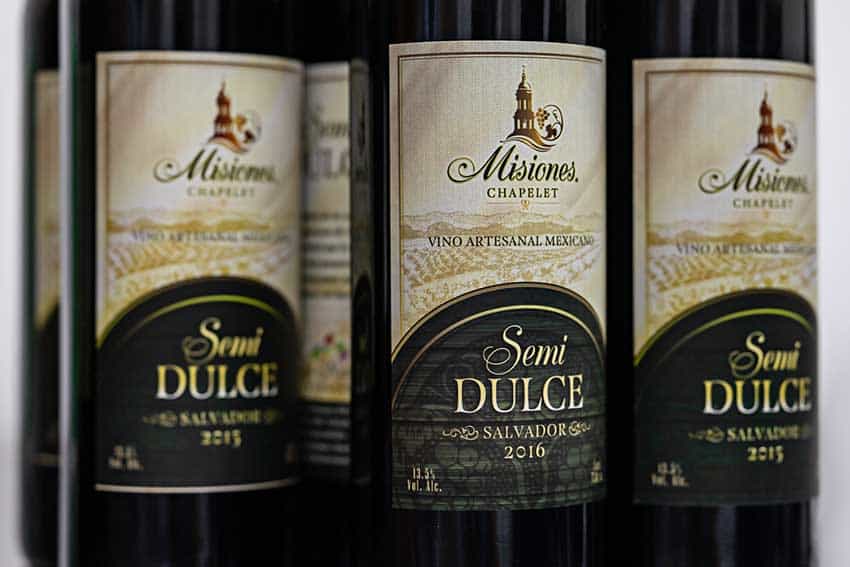
As Olguín casually mentioned, “the area is like a spa, as they’re covered from the sun and the rain and each is fed an individual diet while they milk.” The cows are raised without the use of antibiotics or growth hormones, and are free to graze in pastures that contain no chemical fertilizers or pesticides.
Next we visited the cheese cave, which was built two years ago to begin making aged and mature cheeses. Beside the aging room we sat at long tables to have a light breakfast and sample a few of the cheeses. We tried adobera, campanelo and a montañés cheese, with the medium-hard texture and neutral flavour of the montañés being my favourite.
We finished the day and our excursion in the small shop at Rancho La Hondonada, where we made our final purchases of cheese and yogurt to indulge in back at our hotel.
With our trip exploring a few of the organic farms of Querétaro at an end, I can truly say the Ruta de Queso y Vino has some fine options for organic and artisanal products to enjoy within Mexico.
